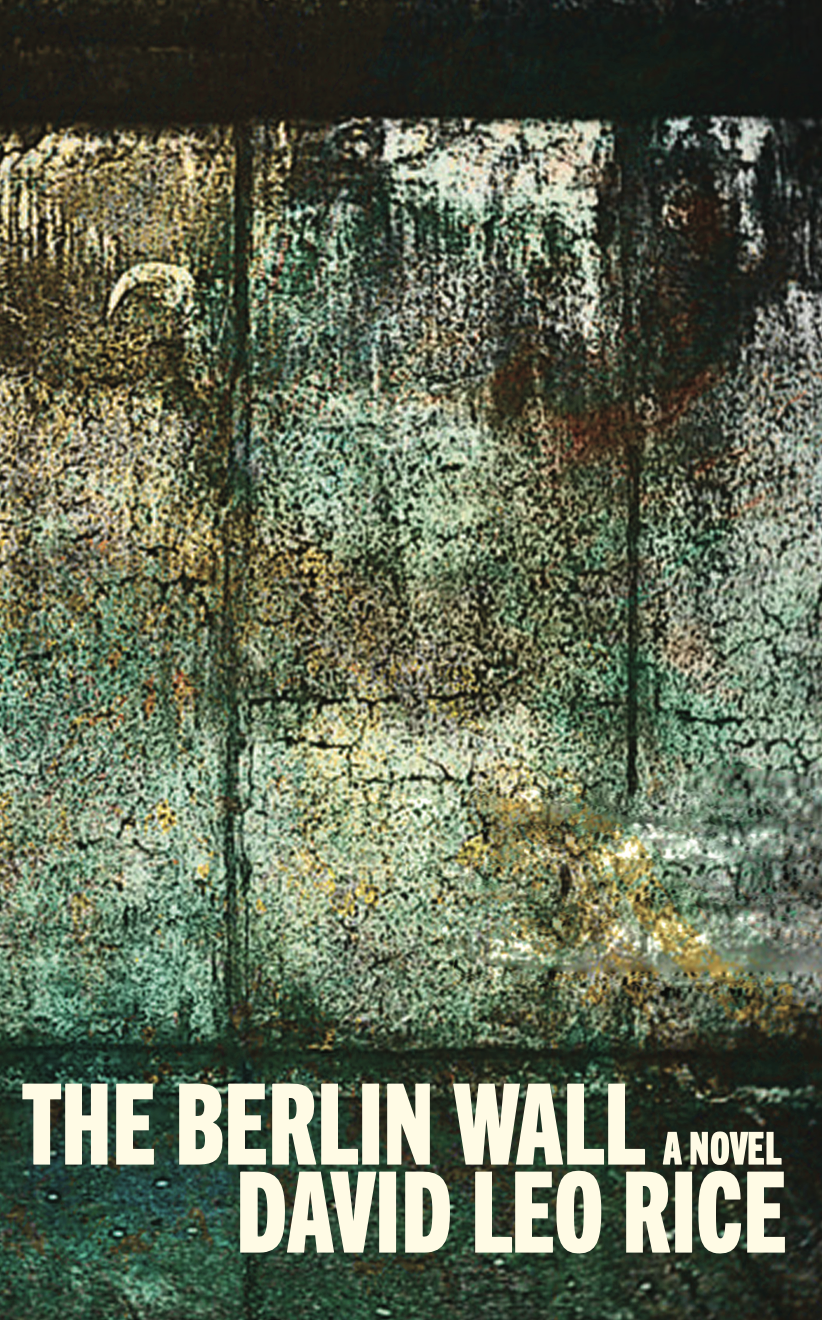
Europe, 2020. Some claim that the Berlin Wall, once a living entity, is coming back together, its scattered pieces seeking reunion on the far side of history. The European continent trembles on the edge of total war, either in reality or deep in its own feverish imagination. Part present-tense apocalyptic satire and part neo-medieval phantasmagoria, David Leo Rice’s new novel presents an alternate history of the present where the Internet has become a territory unto itself and unstable factions obsessed with nationalism, liberalism, and romanticism drive one another toward a clash that could turn the very notions of refuge and culture into the ravings of a lunatic.
Buy ‘The Berlin Wall’
Whisk(e)y Tit
David Leo Rice
Thomas Kendall
Thomas Kendall Berlin Wall Talk
I think I’ve said already that for me the The Berlin Wall seems to be both the apotheosis of your style and totally sui-generis. There used to be a press called Daedalus that put out these very esoteric, intensely feverish Eastern European novels and it’s the closest I can come to thinking of a comparison but there’s no formal relation there. I’m fascinated by the relationship of your narrative to its image, if that makes sense, and the effect you achieve of both intense familiarity and utter estrangement is uncanny in what feels like a new, almost inverted, way. So, I was wondering if you could talk a little bit about the genesis of your style or how you conceived of The Berlin Wall? What writers have you been influenced by or are you like Ol’ Dirty Bastard with no father to your style?
DLR: Thanks, that’s fantastic to hear! Definitely the combination of estrangement and familiarity was the starting point, in that I wanted to tell a story about events that I hadn’t experienced and never could experience, in terms of being a Hungarian extremist or a living piece of the Berlin Wall or the Chancellor of Germany, but that would tap into or summon up feelings and mental states that I could indeed access, almost like these estranged characters would pull me toward things inside myself that more familiar people and settings couldn’t. I tend to think that wherever you start in writing, your goal is to move away from it. So if you start with what’s familiar to you, you need to defamiliarize it, and if you start with what’s unfamiliar, you need to do the opposite. Style comes from this push and pull and it works best when it almost doesn’t cohere – when the tension almost breaks it, but then it comes together despite itself.
This is very much the territory of the uncanny, which, as defined by Freud, itself comes out of the Eastern European (if Vienna is Eastern Europe) mindset. The Eastern European fantastic has always been extremely attractive to me, and has functioned in this way throughout my writing life, feeling totally unfamiliar while also dredging up a familiarity buried beneath what I think of as my known world. It seems to touch me on the level of genetic memory – my great-grandparents are from Minsk and Odessa – and so even though I didn’t grow up in those places, or even grow up with anyone who did, they still stir something in my blood. Authors like Bruno Schulz, Joseph Roth, Isaac Bashevis Singer, Isaac Babel, and Witold Gombrowicz stir me as deeply as any authors I’ve ever read. When I look at Marc Chagall paintings of shtetls, or Alfred Kubin drawings of dream-landscapes, I feel I was in those places before I was born.
The feverish all-melting, all-combining relation to reality that these authors conjure, as well as their relation to puppetry and animation, which has a rich Eastern and Central European history, was formative for me. I studied animation in college, especially the great masters from that part of the world like Jan Svankmajer, Yuri Norstein, and Wojciech Has, as well as the Quay Brothers who took that style and ran with it. I was drawn to that relation to character and setting, in which it’s never clear which is which. I like thinking of people as places and places as people: maybe that’s where the idea of the living Berlin Wall in this novel came from.
Using this idea, I wanted to blend estrangement and familiarity in terms of the book’s relation to history and the present. It’s clearly set in 2020 and the historical references, from the Berlin Wall itself on down, are basically accurate, and yet the content is as insane as I could make it. I wanted to write a book that felt as bizarre and unmoored as the experience of tracking current events and trying to break through to “the news behind the news” felt in the late 2010s and early 2020s. Lately, this feeling has somewhat subsided for me – maybe I’ve just normalized it, or else my life has become more concrete and local – but I hope this novel serves as a time capsule for how inner life (not necessarily what was actually happening in the world, but what seemed like it was happening, or was about to) felt in those years. I had other aims as well, but in terms of style, that was the starting point, and it necessitated a blend of the real and the fantastical, since the news itself seemed to be about the real world and yet felt like it was spinning through a vortex of unreality.
That’s fascinating about the influence of animation and I can totally see a relationship to Svankmajer in your work and how you’ve transplanted/developed/mutated ideas around plasticity and regurgitative bodies. Which leads me to want to ask about the body in your writing. What role does it play in your thinking given how mutable it is in both The Berlin Wall and The New House?
I love the idea that what makes fiction interesting isn’t the presence of well-developed, three-dimensional characters, or the richness of strange and vivid two-dimensional characters, but the complexity and unpredictability of the interactions among them. When I’m working on a book like The New House or The Berlin Wall, someone might seem truly real and vested with a nuanced, troubled psychology in one scene, but then in the next scene they’re a cartoon character, and in the scene after that, a puppet, and in the scene after that, real again, struggling to process what they’ve just been through. In my Dodge City books, characters die and come back from the dead many times, or even somehow “leave the book” and then return to it later on, but never without being marked by that experience.
I’ve always loved circuses and carnivals for this reason, as well as pageants and any ritual involving masks and costumes. The slippage between levels of humanity, wherein people might be “playing a character” and “being themselves” in the same instant, and thereby connecting to an ancient tradition or even to some wavelength that goes beyond tradition, is tantalizing, and is luckily something that fiction can exploit. This is an aspect of Pynchon that resonated with me as a younger reader: the way that he plays with who’s real and who’s a figment and who you can empathize with vs. who you have to see as a punchline or a purely literary device and how, as in social life where people so often surprise us, your emotional intuitions are often proven wrong. Unlike in social life, fiction allows us to enjoy being wrong in this way.
In my notes I wrote something about Larval Reproduction and the way certain characters seem to both long for the borrowed power of a master and recoil from their inevitable subsumption by one. Fascism seems to be depicted in The Berlin Wall as something between the orgiastic and abject, a festering pleasure of weakness that turns like milk. I was wondering if you could say something about power and the individual or how you approached rendering the fascistic body in particular?
“Festering pleasure of weakness” is a fantastic phrase, and is absolutely what I was thinking about in terms of the longing to submit to an absolute master and how that feeling annihilates the self but, because the self chose it, also empowers the self more than any compromise-based view of reality could, at least in the mind of someone longing for that type of total submission. This relates to the idea we were discussing before about how real and how unique characters appear to be: the paradox of fascism is that, on the one hand, its lonely adherents yearn to be “made real” by submitting to a group fantasy, while, at the same time, they strip away the reality of their victims whose suffering, in the end, makes them even realer in the eyes of history, while the perpetrators become cartoon villains.
I think a lot about the gentle vs. the brutal sides of my own personality within my attitude toward writing: I have a dreamy, laidback side that wants to take everything in and ruminate and enjoy the sensations and richness of life, but also an output-obsessed side that I internally fear and try not to aggravate or disappoint. I think this balance of forces – a version of the Apollonian and the Dionysian – is necessary for artistic production.
It’s also why I’m drawn to characters who, as you say, “long for the borrowed power of a master and recoil from their inevitable subsumption by one.” This is the root of the psychic battle between religion and doubt: the desire to disappear into the infinitude of God vs. the desire to empower the self through denying that infinitude. Is it more empowering to fuse with ultimate power, even if that means vanishing as an individual, or to draw the lines as clearly around yourself as you can and wage war against the world from within that fortress? This is the battle at the heart of Lovecraft’s stories, where lonely individuals always both do and don’t want to peer into the abyss of cosmic power.
I’ve never had a fascistic worldview in terms of culture or politics, but I do think of my drive to write as a sort of “inner fascism,” whereby part of me wants to rule my inner world with an absolutely iron fist, while another part wants to rebel against that rule, and yet another part – perhaps the innermost part – wants to submit and thereby become ennobled as a servant. I like the idea that submission is one of the greatest choices you can make in life. You can’t get any more chips from the dealer but you can choose what to bet them on, and people who bet them all on one thing have something special about them. It’s like the old saying that whatever you choose will kill you. If you choose adventure, adventure will kill you; if you choose poetry, poetry will kill you, etc. The saddest outcome is, if you choose nothing, nothing will kill you. So making a definite choice and devoting your life to that is crucial. It’s a form of putting your body on the line, not as drastically as soldiers do, but perhaps with an equal fervor.
There’s the classic idea that fascism is an aesthetic obsession grafted through violence onto the world of flesh and blood. The whole “Hitler was a failed artist” thing is probably over-discussed, but it does seem true that the fascistic worldview comes from an obsession with how things look, regardless of what it takes to make them look that way. It’s an enforced superficiality that gets elevated to a maniacal organizing principle. Like Anders Breivik and his gang in my book who are trying to raise Atlantis as a land of buried truths, it seems that fascism emerges from a modern malaise in which people feel that the ultimate, true things in life have been buried or allowed to sink, and they respond by trying to render these things apparent again by painting pretend versions of them across the surface of reality.
If you impose aesthetics onto the realm of morality in this manner, you end up in a terrifying place, but if you impose morality onto the realm of aesthetics – not a programmatic morality of making your art “say something” or even “mean something” definite, but just approaching your aesthetic work with moral seriousness – then something potentially profound can emerge. Therefore, this kind of “inner fascism,” when it comes to writing, inverts the principle. Rather than making the human world into a fantasy version of itself, it makes the fantasy world into a human version of itself.
That might lead well into another question I am going to struggle to form. Both The Berlin Wall and The New House evoke/represent/embody/deploy simultaneity in a way that ought to be extremely disorientating and yet it works effortlessly. There’s such a precision of ideas about fluidity and the prose is so clean, I wondered when it comes to your novels do you have a conceptual/theoretical framework? I’m sort of asking what’s your position on reality haha but that doesn’t seem to work. I’ll try this instead, do you have certain rules regarding these ideas and how you will try to embody them in language?
I always think about the relation between the “real timeline of events,” insofar as I picture what’s happening in the book as being real in another realm – I never think of my imagination as generating ideas out of nothing, but rather as spinning or forging them out of some materials that already exist in a place I can dimly access (like Gerald Murnane’s “grasslands beyond the grasslands”) – and then the reader’s timeline, which is also real, perhaps more so, but secondary to my experience of writing. So when I start a book, I’m fully immersed in the events themselves and trying to consider how they unfold and what relation they bear to one another, which definitely isn’t a linear cause and effect structure but also isn’t an associative or purely collage structure. While I may not have a theoretical framework when I get started, I do believe in plot to a pretty high degree – I want readers to feel they’re reading a story, not only a book – it’s just that I’m drawn to plots that unfold from many angles at once, where the feeling of causality is perceptible in the background but never reveals itself as such.
In my stories, the past and future each bear down equally on the present, so the present is like a child stuck between warring parents. Time never moves in only one direction, though irrevocable events do occur and everything has consequences. I forget where I read this, but I love the writing advice that “every event should be a door that locks behind you.” This goes back to my love of circuses: if the book is a funhouse, it builds intensity if the reader can never get back out the way they came in.
When I start a new book, or even a day’s work on that book, I’m trying to understand how these disparate events might cause and be caused by one another, or even by events that lurk outside the story but are suggested by it (and might lead to another project later on). If I can experience the events occurring in a way that surprises me and feels somehow fated, as in a dream, this is a much deeper and more satisfying feeling than trying to make them up logically. So, when the work goes well, effects come first and then later I go back and try to work out the causes.
When I finish, I want the reader to be able to read straight through and, as you say, still have a clear and coherent experience, but in a way that isn’t just A leading to B leading to C. This is something that I learned from Murakami as a teenager, the way his books felt so narratively propulsive and yet also spatially expansive, like there were tunnels and tributaries spoking out from the spotlight of the main story in every direction, even though that main story never faltered or revealed itself to be a ruse. I try to inject this feeling into everything I do, since it’s one of the most pleasurable I’ve had as a reader. I love the effect of a clear lens onto very obscure events. If the lens of the prose feels dirty, then the events behind it are less intriguing because I don’t feel I’m seeing them clearly, which means either that the author didn’t want me to or didn’t imagine them all that clearly in the first place.
But if I feel that I’m seeing these events as clearly as possible, and they’re still totally deranged, then I know I’m reading or writing (which is also largely a reading experience) a book I can truly enjoy. I studied mysticism in college and this is what drew me to it: the way that people who’d had visions or transcendent experiences struggled to evoke them in prose while knowing from the start that they were doomed to point in a direction that went much farther than they could reach.
Just to go back to what you were saying about your characters and how they shift form but maintain some aspect of themselves, enough at least to be able to struggle to process what they have undergone… What is this thing that struggles to survive the very aspects that inform it? And I think that question of inner life or inner experience and its confrontation with the form of, I don’t know, actuality or the concretising discourse of structures set up against the bulwark of time, is one of the most fascinating aspects of your writing in general, so perhaps you could expand upon how the imaginary impacts upon ‘real life’?
This relates to the mystical tradition as well, which would often try to access the divine negatively, by saying all the things that “God is not,” instead of trying to say what God is. The same could be said about the core of the individual: the core of the individual is whatever doesn’t get burned off or warped beyond recognition after undergoing the most radical experiences imaginable. Perhaps this core is actually formed by these experiences, while everything else is deformed.
This is how I think about dreams and imagination, and thus about writing: everything that happens has to matter to everything else. I hate the kind of diverting dream sequences you see sometimes, where it either ends up with just “it was all a dream” or else the dream takes on some symbolic relevance to the waking story, but nothing more. For me, dreams are a site of action as much as any waking situation can be, so that your life can change in a dream just as profoundly as it can while awake. Part of the greatness of The Metamorphosis is that it begins with waking up from a dream, rather than ending that way, and proceeds into Gregor’s conundrum from there. As in the classic story “In Dreams Begin Responsibilities,” I really do see dreams as a place where lifelong responsibilities can begin, just as myths are both a symbolic rendering of what happens in “real life,” but also the underlying stratum that makes life seem real in the first place. This is one theme in Berlin Wall, the way that both fascism and utopianism (if there’s a difference) yearn to “turn reality real again” by dredging up and dusting off myths that have gotten buried beneath the bustle and insubstantiality of liberal capitalism. This is why you can read Jung or Eliade or Joseph Campbell through a fascistic lens, no matter what they may have intended.
Therefore, when I’m writing, I want to keep the doors open to all possible zones – changes of physical state included – but the openness of these doors means that what happens in one zone has repercussions in all the others. To return to the funhouse metaphor from earlier, the doors always lock behind you but open up ahead. A character might turn into a puppet in one scene, but when they reemerge as flesh and blood in the next, something about who they are is different. The question then is “who are they”? Who is anyone such that some essence can survive such drastic changes of state?
We talk about how fragile life is, and how everything can change in an instant, but the opposite may also be true: that people, as long as they’re living, can adapt to and even normalize anything, and thus something within them remains unchanged no matter how much flux their circumstances are in. One question that has continued to motivate me is a desire to see how durable the classic storytelling forms can be: how much madness can a story or a character accommodate and still function in a “normal” narrative mode? Historically, this is another theme of The Berlin Wall: how did Europe suffer such unimaginable suffering and barbarism so recently and yet still turn into such a normal-seeming place? And if this normality is an illusion, what’s beneath it?
Lastly, in terms of how characters respond to this flux, I like to play with what’s taken seriously and what isn’t. In my “Brothers Squimbop” stories, the Brothers are a comedy duo who are sometimes also truly evil but other times are just hacks on the summer theater circuit and yet other times, I hope, manifest a sincere romantic longing. I like the idea of mixing comedy and drama in unstable ways by, for example, writing a totally slapstick sequence that then has a profound effect on the characters in a way that’s described as realistically as possible, or else the opposite, something horrific or tragic that gets processed as slapstick. If I can keep those dynamics alive for myself when I’m writing, there’s a chance the feeling will come through when someone reads it.
The premise of The Berlin Wall is so immediately fascinating, is it an idea that you had been sitting on for a while or something that you acted upon immediately? In terms of the scope of eg WORLD WIDE HISTORY how did you approach the scale of thing? Was it different from your approach to your other novels?
I remember standing in the Sicilian pastry shop next to my old apartment in Brooklyn one afternoon in 2018, probably glancing up at the Italian TV station that always plays above the cake cases, and thinking, What if the Berlin Wall had been alive? I started working on a book based on that concept pretty much right away. I had just taken my honeymoon in Norway and read a book about Anders Breivik when I was there, and I had vivid memories of hanging out with a Norwegian guy in the country of Georgia in 2011 when the Breivik murders happened and watching on Russian-language TV in a hostel as the news broke. I’ll never forget his face as he took it all in. Another huge influence at that time was reading Alan Moore’s From Hell, especially the idea that Jack the Ripper was a trans-dimensional force sent to cut the 20th century out of the womb of the 19th. What if Anders Breivik were the same for the 21st? I wondered. This idea actually appears in the book.
Years earlier, I’d worked with the British filmmaker Simon Pummell in The Netherlands on a film about Daniel Paul Schreber, a German judge who in the 1890s had a nervous breakdown and was confined to a series of asylums, where he wrote a wild memoir about how God was hollowing out his body in order to impregnate him with the “true human race.” This project immersed me in the freakier side of the German soul.
I don’t know how the other pieces came together, but they did, enough to suggest a starting point anyway, and I just took it from there. Antoine Volodine’s Radiant Terminus was also an influence for how a non-Russian writer might use the expanse of the Russian interior as a canvas for imagination, and how history itself might become a kind of pliant material to play with. Mark Fisher’s Capitalist Realism was crucial too, with its idea that the fall of the Berlin Wall represented the end of the narrative not only of communism but of capitalism as well, since throughout the Cold War capitalism had defined itself not on its own terms but only as the alternative to the Evil Empire. When there was no such empire any longer, capitalism entered a post-narrative zombie state.
I tend to think this is how what we call “inspiration” works: an idea seems to come out of nowhere, but then it sparks off of many other latent ideas and memories and draws them together into a harmony that they never would have had on their own. It’s the “missing link” in this way. It’s a strange feeling to have all this trash in your head and never know if something you haven’t thought of yet will one day make it all useful. I have a friend who used to say “You don’t know what you’re prepared for” (presumably instead of “You don’t know what you’re in for”), and it’s really true.
In terms of trying to take on recent world history, or a kind of “totality of the present,” that was a conscious attempt to do something new. All my previous books deal with my own memories and fantasies in mutated versions of my hometown, so I set myself the challenge of writing something totally unfamiliar this time, and I made the rule that it would never set foot in America or even mention America except in a couple of key but minor moments. I studied German language and literature in college and wrote my thesis on the literature of the woods in Germany, and then lived in Berlin for a year thereafter, and crossed Russia and much of Eastern Europe by train, so it wasn’t totally unfamiliar territory, but it was distant enough that it felt like a meaningful challenge.
I also wanted to convey something of the madness of the 2016-2020 period, when the whole world (or so I imagined from within my bubble) had grown twitchy and paranoid and was stuck in what I came to call an “unworkable equilibrium,” a state in which it seemed both that a complete collapse was coming and also that nothing of any substance was going on and we were all overreacting to everything. It seemed impossible that both could be true, and yet in those years I never feared calamity without also fearing that I was being tricked into fearing it, nor did I ever let my guard down without fearing that I was being tricked into doing so. I wanted to write a book that conveyed this feeling, and how it was awful and exhilarating – finally, history is happening again! – at the same time.
Stylistically, I wanted to find a volatile but viable balance between reality and fantasy. I didn’t want the book to be straightforward historical fiction nor any kind of political statement or commentary on current events, but I did want it to feel real in its geography, timelines, personalities, and basic details. I didn’t want it to seem like a total gonzo world where anything goes – it had to seem like it bore some relation to the world we actually live in, however sinister or buffoonish that relation turned out to be. This goes back to your earlier question about continuity of character: here, I wanted some continuity of character about the world and the nature of the very recent past (although when I was writing the book in 2018-19, 2020 was the near future).
For me, this continuity is crucial for activating fiction’s potential. If, as a writer, you hold yourself back and limit what you’re willing to imagine, then you end up in a purely descriptive mode that rarely rises to the level of art, but if you give in fully to your imagination without observing any reality principle, then you end up with pure fantasy, which can feel juvenile or gratuitous because if anything at all can happen, then it doesn’t much matter what does. The books that strike a balance between being highly imaginative, even perverse, and yet also real enough to feel like events have costs and consequences, are the most precious to me.
Just to end then, what’s next? I know you have several other books due out next year and I believe a new trilogy is in the offing?
A few things are in the works, all of which I hope will connect up in an expanding fictional universe. In 2025, I have a new story collection coming out with 11:11, who published my first collection, Drifter, a few years ago. This new collection, The Squimbop Condition, is a set of linked stories about the Brothers Squimbop (sometimes known singly as “Professor Squimbop”), a time-traveling comedy duo who, as I mentioned above, are sometimes a pair of light-hearted circus performers and sometimes possessed with the spirit of pure evil. My first novel, Angel House (which I wrote in Berlin, to bring things full circle), featured Professor Squimbop as the main villain, so this collection is a chance to get to know that character more on his own terms, and those of the duo he’s sometimes part of.
Then, also in 2025, the third and final of my Room in Dodge City books will come out. I began the first book also in Berlin right after college, and have been working on the trilogy ever since. It features a nameless drifter in a psychedelic version of the classic Dodge City (incarnated as both a real town and a movie set), and the third volume is concerned with how to wrap up and move on from a long term, multi-part narrative, which I think is where I’m at in my writing life, culminating one long phase and hopefully beginning another.
In terms of new work though, I’m working on a sequel to The New House, so perhaps I haven’t fully moved on from the phase I’ve always been in. This new volume also deals with a fascistic tendency in narrative, as it centers on a battle between the “real” events of the main character’s life, which are so chaotic and entangled as to drive him mad, and the work of his “Biographer” (maybe another version of himself), who forces those events into coherence with an absolutely iron fist, sparking a sort of inner Holocaust in the process.
References
Books
From Hell by Alan Moore & Eddie Campbell

Dancing Bears by Witold Szablowski
The Black Maybe by Attila Veres
Memoirs of My Nervous Illness by Daniel Paul Schreber
Collected Stories of Isaac Bashevis Singer
Tales of E.T.A. Hoffmann
Heroes: Mass Murder and Suicide by Franco ‘Bifo’ Berardi
The Radetzky March by Joseph Roth
The Sailor Who Fell from the Sea by Yukio Mishima
One of Us: The Story of a Massacred in Norway–and its Aftermath by Asne Seierstad
The Elementary Particles and Platform by Michel Houellebecq
Radiant Terminus by Antoine Volodine
Zone by Matthias Enard
Solenoid by Mircea Cartarescu
The Notebook Trilogy by Agota Kristof
Satantango and Baron Wenckheim’s Homecoming by Laszlo Krasznahorkai
The Door by Magda Szabo
Belladonna by Dasa Drndic
The Balcony in the Forest by Julien Gracq
Steppenwolf by Hermann Hesse
Capitalist Realism by Mark Fisher
The Bachelors by Adalbert Stifter
Memories, Dreams, Reflections by C. G. Jung
The Origin of Consciousness in the Breakdown of the Bicameral Mind by Julian Jaynes
Immensee by Theodor Storm
Works of Novalis
General of the Dead Army by Ismail Kadare
Limonov by Emanuel Carrere
The Tidings of the Trees by Wolfgang Hilbig
The Tartar Steppe by Dino Buzzati
Mysteries by Knut Hamsun
Film & TV
Europa by Lars von Trier

The Power of Nightmares, Hyper-normalization, and Trauma Zone by Adam Curtis

Come and See by Elem Klimov
Shock Head Soul by Simon Pummell

Mishima: A Life in Four Chapters by Paul Schrader

22 July by Paul Greengrass

Demon by Marcin Wrona

In the Basement (Im Keller) by Ulrich Seidl

The White Ribbon by Michael Haneke

The Return by Andrey Zvyagintsev

Polytechnique by Denis Villeneuve

The Pervert’s Guide to Ideology by Sophie Fiennes
NSU: German History X by Christian Schwochow

Werckmeister Harmonies by Bela Tarr

Victoria by Sebastian Schipper
I Stand Alone by Gaspar Noe

Sunset by Laszlo Nemes

La Vie de Jesus and L’Humanite by Bruno Dumont

Cuck by Rob Lambert

Look Who’s Back by David Wnendt

The Cremator by Juraj Herz

Faust by FW Murnau

Azor by Andreas Fontana
A Face in the Crowd by Elia Kazan
The Northman by Robert Eggers

Anselm by Wim Wenders

Wings of Desire by Wim Wenders

Rammstein Deutschland video

The Hourglass Sanitorium and

The Saragossa Manuscript by Wojciech Has

On the Silver Globe by Andrzej Zulawski

Nitram by Justin Kurzel

Mephisto by Istvan Szabo

Babylon Berlin by Tom Tykwer et al
Dark by Baran bo Odar and Jantje Friese

The Hour of the Wolf by Ingmar Bergman

Pandora’s Box by GW Pabst
Serbian Epics by Pawel Pawilkowski

The Hater by Jan Komasa

Taxidermia by Gyorgy Palfi

Phoenix by Christian Petzold

Over Your Cities Grass Will Grow by Sophie Fiennes
Revanche by Gotz Spielmann
In a Glass Cage by Agusti Villaronga

Excerpt 1: Anika
Once again, time passes in such a way that Anika can’t say where it went, nor what shape its passing has taken. The endless summer wears on, the air getting thicker and hotter without ever feeling later. Not that it feels early, she knows, but rather that it felt as late as possible right away. She’s in the cottage beneath the cottage, working on her book, now entitled Reflections on Normal Life in Southern Germany, while Ute rests in an armchair. Anika sits at a cozy desk in front of a window that seems to reveal a placid garden scene, though there are days, like today, when she questions where this imagery comes from. I’m wondering, she thinks, removing her hands from the keyboard for fear of accidentally interpolating her doubt into the document that’s slowly taking shape, whether the day out there, and this cottage, and the whole history it seems to suggest, is being piped in from someplace far away. Like muzak to placate a frightened patient in a dentist’s chair while the anesthetic takes hold.
—- When this series of thoughts has run its course, she places her hands back on the keyboard and watches them type: and this is the home, dear sweet home, in which I’ve lived with my cherished, elderly mother, since time immemorial. Well, at least as far back as I can remember, ha ha!
—- She laughs aloud, as if the sound of her own voice might lend veracity to the line she’s just written. Ute stirs in her chair and groans, gathering her blanket around her neck as she nods back off.
—- Anika looks out the window again, at a series of families walking nearly identical dogs, looking neither at her nor at one another, and then she catches a whiff of smoke curling down the stairs, and her eyes fill with tears as she remembers the burning Forest, the penitents in circles around pillars of ash, the island of Berlin sinking beneath the green waters of her memory, or that of the person she used to be, and, leaping to her feet, she shouts, “The cookies! They’re burning!”
—- “Cookies?” Ute yawns, but Anika has no time for her mother’s confusion. She knows better than to go down the road of arguing with her about where the smoke is really coming from. Instead, she runs across the cottage to the sun-dappled kitchen in back, and pulls the sheet of blackened dough from the oven, just as she always does at this time of the afternoon, when she’s written the few lines that she’s going to manage for the day and the ongoing presence of the world above insinuates itself back into the idyll here below, threatening the very essence of normal life in Southern Germany. So, she removes the burning cookies and shouts, “Mother, get dressed, we’ve got to run to town to pick up more flour, butter, and sugar. These are ruined. I’m sorry I was so absorbed in my work that I forgot to check them.”
After a slow interval in which Ute has to be coaxed from her chair and helped into her going-out dress and sturdy walking shoes, she and Anika exit their cottage onto a street lined with dozens just like it, all of them done up in the classic Bavarian half-wood style, all inhabited by families that never emerge except to walk their dogs.
—- Anika used to linger on their lawns and try to peer in, debating whether to go up and ring the doorbell and introduce herself as the new neighbor, but then a face appeared at the window that was so pallid, so barely-human, that she turned and ran, in a heedless panic, off onto another set of streets and spent the rest of the evening finding her way home, exhausting herself with the effort of ignoring the thought that perhaps she was lost for good. A stray person in a world without oversight, she remembers thinking during that awful interval. A piece on a board that is no longer part of any game.
—- But I can’t be lost, she thinks now, gripping Ute’s frail hand, because here I am! She smiles, determined to find solace in the tautology.
—- Ute leans against her, dragging her feet, as they come to the end of the lane they live on, and turn onto the main road that winds through copses of flowering trees and into the outskirts of Baiersbronn. Anika used to wave at the cars rattling slowly by, but this, too, she’s had to cease doing. The faces in the car windows were the same as those in the windows of the houses, both human and not, orbs of flesh with eyes and noses and yet, in some crucial aspect, lacking all sympathy. Neither hostile nor greedy nor furtive nor lecherous, but simply not all there, unable to meet the minimum requirements for recognition of mutual humanity. So, now, Anika looks down at her feet, or up at the road winding ahead into the distance, whenever a car passes by. As always, Ute seems unconcerned, lost in thoughts of her own, or simply absorbed by the task of remaining upright.
—- After passing into the town proper, they make their slow but deliberate way up the high street, past the tavern cantilevered over the brook, past the church in the quaint central square, past the shop that sells sheet music and classical records, past the cafes and the restaurants, past the train station she arrived at—she can see herself dragging her suitcase from Berlin, even if the streets, as she pictures them on that first afternoon, float far overhead—and along the strip toward the Aldi on the far side.
—- Anika looks further up the strip[DR1] , at the corporate campus with its constellation of office buildings, some bearing German flags, some American, but her eyes water and her mouth goes dry, and she’s forced to duck into the Aldi before she collapses out front, as has happened once before.
Inside, she continues to fight the pressure building in her sinuses. Though she’s not aware of any formal limitation on how long she can be out for, nor on how far from home she can go, she’s never tried to go farther than this. Even this far, a couple of kilometers at most, oppresses her equilibrium, lending the world a heavy, underwater feeling. Most of the time, she forgets that she is, in some sense, living underground—if her memory of descending a staircase can be trusted—beneath the Europe she was born in, and in which she traveled to the Black Forest as a semi-famous author on a prestigious government assignment. But now, in the produce aisle of the Baiersbronn Aldi, the weight of it comes down on her. The sense of depth, of being beneath so much, compresses her lungs and forces her to grip the shopping cart and pant in thin, raspy drags, like a woman who’s spent decades in this town, subsisting on beer, cigarettes, and whatever meat wasn’t deemed fit for export.
—- Ute looks at her, unfazed. Like so, they traverse the aisles, gathering eggs, butter, milk, flour, and chocolate chips.
—- By the time they’ve reached the checkout counter, surrounded by more of those silent, non-emotive figures that seem to’ve been deployed merely to lend the town a semblance of inhabitation, Anika is shaking so badly she has trouble getting her wallet out of her purse. Ute has to clench open the edges, like a surgeon’s assistant, and hold them while Anika pays, avoiding eye contact with the checkout girl who, naturally, isn’t trying to make eye contact with her, either.
The walk home is excruciating, worse than any Anika can remember. They skirt the high street, which seems longer and more menacing in this direction, strewn now with glowering teenagers and snapping dogs, before passing back through the square with its abandoned church and a pile of metal café chairs and umbrellas that must’ve blown over in the wind.
—- The road snakes around and Anika drifts, pressing her shins into what now feels like a thick buffer of gel. When she looks up at the sky, she sees roots forcing their way down from the cloud cover and she glimpses the trees high overhead, on the other side, burning and burning in the Black Forest, until it becomes a forest of flame.
—- Coughing in the smoke, she grips Ute’s hand, hefting the groceries on her other side, and drags the old woman back up their street, past the silent neighboring houses, or the place where those houses should be, but now it’s dark and the road has turned to soil and the trees have loomed all around them, and the Black Forest, with its burning and chanting, is all there is.
—- Anika wants to run, either toward or away from this realization, but she’s too tired to drag Ute, who’s now reverting to concrete and wire, her heels sparking against the road.
—- By the time they reach the front of the cottage, the entire structure is covered in skin. Perhaps, Anika thinks, the very same skin that, until just now, covered Ute’s frame, turning it into something motherly. Allowing that tenuous story to cohere. The cottage pants, inhaling and exhaling with the rhythm of some far-distant set of lungs, entirely calm despite the crisis that Anika tries to believe has actually occurred. The burial of our peaceful home, she laments, half in earnest and half in a voice from a fairy tale, the invasion of our normal life, shuddering at the sweat-reek the skin gives off when they get close enough to smell it. Because if no crisis occurred, she can’t help thinking, then it means things have always been this way, and the only crisis is that I once let myself believe otherwise. Killing this line of thought before it goes any farther, she gathers herself, lets go of Ute’s hand, and forces her way under the skin, groping around for the latch.
—- When she finds it, she pulls open the door and hoists the hanging flap into an awning so Ute can crawl under. Inside, she marches straight to the fridge, desperate to put the groceries away, if only for the satisfaction that accomplishing such a simple task might still provide. The shelves are already full of butter, sugar, eggs, and flour, a record of previous excursions just like this one, earlier times when she and Ute left the cottage below only to return to the cottage above, where, needless to say, it would be absurd to undertake the ritual of baking cookies. Like the folklore section of a university library, she thinks, staring into the fridge: dozens of variants on the same cryptic theme. Reams of data signifying what?
—- Once today’s supplies have been added to all the others, she closes the fridge, takes her shoes off, and gets in bed with the Riesling that, thankfully, is still lying on its side, corked just beneath the dust ruffle.
Now, for days or even weeks, it will be impossible to reenter the world below. Its memory will fade as Ute’s wires tremble outward, rusting in piles across the floor, and Anika’s lungs and sinuses expand now that the lower world has ceased to exert its crushing pressure upon them. She will feel, in place of that pressure, only a dull shame at having allowed herself to lapse so far into the lurid fantasy of a Second Europe underfoot. A cautionary tale, she’ll come to think, of the depths the mind can sink to when not sufficiently occupied.
—- Sighing as her headache dissipates, Anika pulls the pillows over her head to blot out the sound of Europe breaking. She closes her eyes, wraps herself in an eiderdown quilt, and resolves to begin the work of once again imagining a happier existence just beneath the floorboards. Because only once I’ve rebuilt it in my mind, she knows by now, as she drifts off, will it one day become possible to return there in body.
Excerpt 2: Ute
Ute follows the Latvian drunk through a warren of backstreets, seeking the point where the old city gives way to the new, the dense, medieval core rotting into block housing and motorways, flanked by auto-grills and gas stations, all of them full of soft bodies that can’t stop laughing. She laughs too at the thought that this somehow still constitutes a world.
—- “What?” the old man barks.
—- Ute shrugs and squeezes his hand, urging him onward like a horse. The sooner we get to whatever hole he lives in, she thinks, the sooner we can get it over with and I can be on my way Westward.
—- Westward?
—- Yes. Time to return to Germany. See about that altar. The Russian border draws her toward it for months at a time, but it always repels her before she can make any serious attempt to cross, or even to discern if crossing is possible. Every year, though she rarely spells it out, her wanderings follow a migratory path from West to East and back again, between the Ardennes and the gulf that seems to open between her feet and Russian soil whenever she draws close enough to contemplate crossing over.
—-Russia, she thinks, still guiding the old man while trying to let him think he’s guiding her, will mark the end of my journey, whenever the time comes. Perhaps that will constitute a kind of freedom, an eternity among the wolves and birch trees, beyond the last weak tendrils of history. She moans as she lets herself imagine it, the birch forest growing outward to the farthest edges of her consciousness and then growing farther still, warping over into the buzzing, charged-up space where her inner world syncs with the rest of the Wall’s. She pictures all the atomized pieces on journeys congruent with her own, all of us burning off time until Europe finishes its interminable decay and leaves us, finally, free to abandon it. Forgotten at last, when no one remains to remember us.
—- Next year in Siberia. She stifles another laugh.
—- “Almost there,” the old drunk grunts, his calloused fingers worming their way down her back and around the scarred flesh of her upper buttocks.
The man’s home, such as it is, smells of sawdust and motor oil. He heaves up a grate to let them in, then heaves it down as soon as they’ve entered. Ute clenches her teeth to keep from shuddering. It’s a bad idea, she knows all too well, to let them lock me in like this. She recalls the man in Chemnitz who padlocked her in his basement and forced her to watch as he injected an anesthetic into his scrotum, removed one of his testicles with a kitchen knife and, barely wincing, carved it into a flesh swastika, which he presented her with just before passing out and, as far as she could tell, dying on the spot.
—- She kept it in her pocket for the next few days. Then she fed it to a pig she met by the road South of Dresden. When the pig swallowed it whole and implored her with its eyes for more, she thought, if I had more, I would gladly give you them all. It would be my honor to stand by your side and watch you swallow them down, one after another after another, until they were all gone.
—-“Wait there,” the man orders, as he heaves across the concrete floor and into an adjacent room, which erupts in snarls and barks and then, a moment later, the sound of chains and the whining of a rusty lock and then, another moment later, shouting in a language she can’t comprehend mixed with the slamming of a large dog against the bars of a cage.
—- The man returns winded and panting, half-visible in the light filtering under the door he’s just closed. Easing herself into the trance that makes these encounters bearable, she asks, in English just slightly better than his, if she should remove her dress or if he’d like to do anything else first.
—- He seems not to understand the question, so she mimes the act of removing it, and the man nods, still winded, his eyes glimmering. Secondary smells of fur and unwashed work clothes fill her nostrils as she drags the fabric past her face, her exposed skin puckering in the dank air.
—- She folds the dress on a worktable a few paces away, then removes her underwear and places that on top, hoping the man will allow her to keep her socks on, as the floor is almost certainly strewn with nails.
—- He makes no sound other than that of his panting moving lower in his throat. Naked but for her socks, she walks over to him and presents her right side. She holds still while he drags his hands up and down the grout and dried cement and ingrown steel wires that run from her hip to her armpit, his fingers quivering with excitement. She sees that it’s his first time. With men like this, you can never tell until the last minute. Some have made a fetish out of tracking us down, while others wait like bullfrogs until we cross their path.
—-He runs his fingers along the length of the wires, feeling their grooves and irregularities, his eyes closed as—Ute has no doubt—the Wall rebuilds itself in the weak ground of his imagination. The incoherent continent comes back together, its broken backbone healing for the few moments between now and his inevitable orgasm. How she wishes she could share his excitement; to spend even a second with the feeling that the past still matters, and points toward an actual future, a Europe divided in such a way that East and West each grow charged with purpose, with real hope, real fury… to look forward to rather than backward at the fall of the Wall, as if it were all that stood in the way of paradise… what would I give to feel that again?
—-What do I even have to give? She almost laughs again but, for fear of shaming this old man whom she can’t quite bring herself to hate, refrains.
—- She hears his belt buckle hit the cement floor and the gelatinous sounds of his right hand going to work, while his left presses deeper into the caulking that dams up her armpit. He grips onto the rough material, pressing his side into hers, hard enough for her wire to penetrate his skin, and then he moans and, for a moment, stops.
—- She stands very still, unsure of the direction things are about to take, as the man waddles over to another workbench in another corner, his pants still around his ankles, and falters through a drawer, picking up and putting down objects, until he closes the drawer and returns with a box-cutter, its blade ratcheting out one click at a time.
—- She closes her eyes and pictures the virgin Russian taiga, in which perhaps she and her lost cohort will now spend eternity together, frozen in the Arctic wind.
—- Please just make it quick, she prays, as she prayed in ’89, when the hammers came.
—- She hears a low moaning and, a moment later, feels hot blood pooling around her feet, and is about to give thanks for how painless it’s been when she feels the man tip against her, and looks over to see that he’s sliced his own side open, and is now inserting her wires into the wound.
—- Her dormant erotics flicker to life as she feels her metallic extensions, which over the years have grown nerves of their own, enter this stranger’s system, and she reaches her arm out to press him closer, her dry grout growing slick with his blood, and she listens to him moan and, a moment later, hears his weak emission hit the floor, and then she comes too, despite herself, and pushes him off of her, wincing as her wires retract from his body and the flaps of his side hang loose and the caged dog snarls in the other room.
—- The man collapses and lies shuddering and whispering in Latvian, surely begging whatever god he believes in to grant him a pleasant dream.
—- She wipes her wires with one of the oily towels she finds hanging on a hook by the door, then steps into her underwear and her dress, then returns to regard the small, wizened man curled like a puppy on the concrete.
—- A wave of pity overtakes her and she bends over to pull his pants up, hoping to leave him in a semi-decent state should anyone find him here, but he rolls over when she touches him and so, afraid of disturbing whatever repose he’s succeeded in crawling into, she simply takes back the wallets he took from her and stuffs them into a paper bag. Then she covers his wound with the oily towel and unlocks the shed door with the key that, it turns out, had been dangling in the padlock all along.
Outside, the day is finally ending, the laughter dying down. She heads into the sunset, away from the ineffable wilds of Russia and back toward Lithuania, Poland, and the crushingly overdetermined border of Germany, the most crossed and thus least numinous on her entire circuit.
Excerpt 3: György & Ute
The boy in his wolf-suit and the woman in her skin-suit trudge onward, up and up and up the road, until there’s no more road ahead. Caravans full of Breivik Boys and caravans full of skulls and headless carcasses race past them, paying them no mind. Though György suspects that Breivik himself must be looking for him, he figures that the Justiciar has more pressing matters on his mind. Who knows how many Slavs and Magyars he’s impregnated. Probably so many that it’s no concern of his if a few go missing.
—- Either that—György pulls the wolf’s eyeholes flush with his eyes, which he has to do every few minutes—or else he can no longer see me. Perhaps I’ve slipped out of the Game, across the border of Nordmen and back to… wherever this is. Perhaps the heroic struggle that Breivik and his Boys are engaged in is, for them, playing out on a very different landscape, even if, as far as I can tell, it’s the same place.
—-Who knows how many places there are? He pictures himself writing a philosophical treatise on the networked ontology of the situation, the urge to map and the urge to burn maps, the soft landscape of the Real eaten away by clickholes until only the holes remain. “But holes in what?” He can hear himself ask this from a lectern in Budapest, delivering a condensed version of the paper before a packed auditorium, row after row of rapt faces, young men like himself but, crucially, less fully-fledged. Young men like I used to be, before I made a name for myself in the world.
—-Focus! The voice in his head shouts. Find a way back to where you are.
—-Startled, he pulls the eyeholes flush again, resetting his wolf mask and, with it, his focus on Old Hungary. I’m coming, he promises. I’m coming. Wait for me.
—- But looking down at the skin-ground and up at the skin-sky and out at the skin-horizon, like the walls of a room, he can’t help fearing that wherever this is will prove to be the last place, and that it may well be as far from Old Hungary as he’s ever been. As if the entire journey has been a flight from his calling.
—-He growls and tries to heave off the thought that all the experience he’ll ever have, between now and his death, is sealed in here with him already, as is all the air he’ll ever breathe. He takes a deep breath, torn between wanting to conserve it and wanting to suck it all down and expel it in one last teeth-gnashing howl, the words “I tried!” roaring past his teeth as he expires.
Ute scratches at her arm, where no wires any longer protrude, and tries to remember what she’d been looking for when she began this journey. It seems like another lifetime, like some unresolved business she was born with and has spent decades trying to forget. She looks at the tan horizon, hemming in every edge of the environment that she and this boy with his stinking wolf-suit are stuck in, and wonders what culmination either of them could have hoped for when they set out. She can remember happier times with him and with a woman who might have been her daughter, long, lazy afternoons spent in sunlight and a picnic in the woods on Midsummer’s Day. And, now that she thinks about it, she can remember a sense of unity even deeper than those Sundays, a unity so deep that she can’t isolate herself within it, because there was no self then. Only an it, a we. A state of being, but no subject within that state.
—- The Wall. She can see it now. It fills her mind so quickly that it overwhelms her balance and threatens to knock her backwards, and she opens her eyes, only to realize they were open already.
—- So the Wall’s really there, just ahead, and there’s no act of eye-opening that can wipe it away or push it further out. There’s no buying more time. The journey has felt long, but not nearly long enough. It’s all happening too quickly. The Wall is right there, not a memory, not a vision, so tall and gray it looks like the end of the world.
György sees it too. He pulls the wolf-skin tightly around himself and, to take his eyes off the gray enormity, he looks down at his ankles, where, for quite some time, a pressure has been nagging at him.
—- The singular urge to maintain his pace across the frontier has kept him from looking down all this time, but now he can see what looks like the remnants of a man, reduced to flotsam, clinging to his feet. A man-shaped mass of weedy skin, intertwined with moss and vines and mushrooms, stringy and barely alive. With just enough facial articulation left to scan as human, the man-thing looks up at him, its eyes soft and partially popped, and says, in ravaged Hungarian, “György, I’ve tracked you all this way. Please come home. It’s not too late to resume a normal life.”
—- The phrase hits him in the gut, as hard as if one of the Breivik Boys had jumped off his caravan and slugged him with the stock of a rifle. He staggers forward, falls onto his belly, and feels the spawn inside him squirm and chatter. Help me, he thinks, rolling onto his side and looking up at the woman, who seems not to have noticed that he’s fallen behind.
—- “Help me!” he shouts. “My foot’s gotten tangled!”
Ute turns to regard the boy lying on the ground, wrestling with what looks like a tangle of roots and moss. She tears her eyes off the Wall, half hoping it’ll disappear by the time she looks back in that direction, and goes to help the boy up. But before she gets there, a red, watery stain explodes between his legs and he flips onto his back, shrieking at the taut, vibrating skin overhead.
What follows is the deepest, most searing pain György’s ever felt. Deeper even than the imagined agony of heroic battle. Deeper than the exalted death throes of Yukio Mishima, as his bowels came out and his head came off. He phases in and out of consciousness, barely cognizant of where he is or what the woman beside him is saying. He has no words to clarify the nature of the pain to himself, so he fills his head with the same screaming that’s issuing from his throat, the same sound playing out on two channels at the same time, and he pushes his head back into the soft skin he’s lying on, forcing up a deep memory of the Wanderer in Novalis reclining on a bed of wet moss as he digs his feet into the tangle of pants and underwear and weeds and teeth that surrounds them, and prepares to die. The forest beneath the forest, he pleads. Just let me sink down there and stay.
One after another, Ute pulls slippery, blonde babies out of the boy’s vagina. She piles them on the pillowy skin beside her as more and more come, until a total of twelve have emerged, leaving the boy spent and deflated inside his nappy wolf fur, a quarter of the size he’d been. So small that he’s barely bigger than his offspring, which laugh and chitter where they lie.
—- Then they sit up and continue speaking in a language she can almost but not quite understand. Something adjacent to German, but more northerly. Colder, of a deeper green. They grin, their faces already old, their slick baby hair already that of balding men. She watches them cackle and point at her, then teeter to their feet to march in the Wall’s direction.
György awakens to see a small army of miniature Breiviks marching away from where he lies.
—- Though he still feels ripped in half, something inside him rallies and forces his body to its feet. He staggers up, kicks through the remnants of the man who tracked him down, and groans to the woman, “Stop them!”
—- The voice of the Deep Ragnar echoes back through his head and he knows that if he looks to either side, the eggs will reappear, hemming him in, laughing at his desperation to prevent his offspring from going where the Game has already determined they must go. Still, he pulls the wolf fur over his shivery frame, invokes the name of Arisztid Huszar, embodiment of the fullness of Magyar wrath and retribution, and determines to kill those twelve Breiviks before they make it over the Wall to cement his humiliation in the perpetuity of Atlantis.
Together, the boy and the woman track the Breiviks across the frontier, the skin so ample and soft beneath their feet that it feels like running through fresh snow. Water sloshes in declivities all around them, rolling in waves, sometimes blocking their way.
—-They sink in up to their waists and haul themselves out again, blood leaking out of György so fast that he survives only by banishing the pain to another chamber of his rapidly fragmenting mind. That’s all happening in the Game, he tells himself, whereas here, in the snowy, virgin wilds of Old Hungary, my redemption is nearly at hand. My prey has nearly succumbed.
—- Thrilling at the articulation of this prospect, and the lack of any authority to deny it, he throws himself forward, arms outstretched, and catches two Breiviks, holding them face down in a puddle until they lie still. Ute, likewise, catches two more, leaving eight up ahead, still scurrying toward the Wall.
—- They repeat this routine, drowning four more, leaving only four on their way to the Wall, but the injury and the exhaustion have caught up with György and he falls behind, while the remaining four gain distance, growing smaller as they go.
—- György falls on the frontier, his fur cold and sticky atop his tattoo, and knows that the battle, this part of it anyway, is lost. The remaining four have gained too much ground. He watches them march on until a chattering nearer-by pulls his attention downward.
—- “Together in Atlantis! Together in Atlantis! We are together in Atlantis at last!” the eight stunned Breiviks lie chanting, none of them dead, their voices a higher version of the smug whine that György remembers from the horse farm in Norway. He can understand enough Norwegian to tell what they’re chanting. You sound just like your father, he thinks.
—- He lumbers over to where the eight have clustered, basking in one another’s warmth, and he scoops the nearest one up, staring at its still-chattering mouth, the word Atlantis oozing like cream from its lips.
—- Raising the balding blonde thing to his own lips, a modicum of motherly love passes through him, a shameful inability to hate this thing he’s birthed. Then, closing his eyes and willing his teeth to grow into the noble fangs of Arisztid Huszar, he bites down, tearing into it like a slice of watermelon. He keeps his eyes closed, hovering between knowing and not knowing, giving himself permission to continue while also revoking that permission, and bites again, and again, filling his mouth without, yet, swallowing. He feels the body lighten in his arms, diminishing bite by bite as his own face bulges with what’s now inside it, his cheeks puffing out and out and out, until, at last, he’s forced to swallow.
—- When he does, he feels the soft, hot meat pass down into his belly, and he feels its strength course through him. He feels his wounds heal and his lost blood return, better than before, less anemic, less sallow. Purer. Clean, fresh Aryan blood rushes through his system, puffing out his fur, binding it to his skin. He stands up, roars, and grabs the next Breivik, ripping its head off with a single bite.
—- He rips and chews and swallows and rips and chews and swallows again, and again after that, until the eight Breiviks he managed to capture are all back inside him, and he stands ten feet tall, a real wolf-man now, no longer a boy in a wolf-suit. Like crushing the walls of a honeycomb between his molars, all partitions between worlds break down and rush together in his core, making up his new flesh. When there’s nothing more to eat, he rises to his full height, wipes his lips on his furry arm, turns to regard the woman who’s stood to the side watching him all this time, and says, “It’s time to storm the Wall. Are you coming?”
Like so, the wolf-man and the old woman march toward the monolith that has replaced the horizon. They gain speed as they approach it, bouncing between folds in the skin underfoot and swimming through rising breakers, discrete bodies of water merging as the sky sags ever lower, like a circus pavilion collapsing in the wind, until they’re pressed against the towering, graffiti-strewn concrete and the waves have joined to drown the entire expanse behind them. They crush their faces against the Wall, smelling the still-wet grout and the barnacles and the cold, green patches of moss that have already taken root there.
—-Then Arisztid looks to the woman and says, “Climb onto my back,” and she does, her fingers pinching the edges of his tattoo. Just as her palms are pressed flat against him, he presses his flat against the Wall, and, in imitation of his four children who got away, he launches upward with a single, superhuman leap, flying past foot after foot of dead material, the salty air whooshing through his fur, until he stands on the ledge, hundreds of feet up, his paws entwined in barbed wire, oblivious to the woman riding him until she climbs down and, nestling her feet likewise in the wire, comes over to stand by his side.
Together they survey a territory that extends to a horizon that is, once again, defined by the Wall. The center is composed of dense, lush greenery, palm trees and flowering trellises growing beside and among the towering oaks of the Black Forest, subdivided by stone enclosures and amphitheaters and statues of Dionysus, temples fronted by vast Doric columns and sculpted fountains and amphorae and dense stands of olive trees and grapevines, a Nordic dream of Europe’s profound Greek origins, a pastiche of the ancient world as envisaged by…
—- At the center of the forum stands Breivik, shirtless, brandishing a sword, while thousands upon thousands of warriors, likewise shirtless, kneel before him, their bald heads and bearded faces identical in the warm tropical light. Copy and paste, copy and paste. Ragnar, Breivik, Ulli Harz. A servant approaches on his knees, brandishing a bundle wrapped in white cloth, and Breivik holds it up for all to see. Unwrapping it to reveal one of the babies that escaped, he stares into his own miniaturized face and proclaims, “Here, brave Nordmen, is the first of many immortals! Our work is done, our war is won. These children will outlive us by millions and billions of years, and all will be as it should! At last, at long, long last, peace and harmony have been won in Atlantis!”
—- The Nordmen rise and stab their swords into the air, cheering in unison until the Supreme Justiciar cuts them off.
—- “Under the sage guidance of the Deep Ragnar,” he continues, “us brave men of Norway have been led through the collapse, the rubble, the wreckage and the ruin of Europe, past the fragmenting languages and the mystifying borders, through the splintering coastlines and the rising waves,” at this, Arisztid looks behind him to verify that the skin-frontier has turned to ocean, leaving himself and the woman on a seawall surrounding the only island in sight, a cold, salty wind whipping his fur while gulls shriek in the sky, “and, at long, long last, to our ancestral home on Atlantis. We have conquered the Black Forest, drowned the Germans and claimed Baiersbronn for the Holy North. You, and I, and all now able to understand me, as I speak in the uncorrupted Atlantean language of old,” Arisztid bristles with reflexive pride to realize that he, too, can understand it, “will end our lives here, so that the new, immortal, post-consciousness Breiviks who are now in our midst may inherit this paradise free of taint. Free of worry. Free of history!”
—- “No past! No future!” chant the Nordmen.
—- “No past! No future!” echoes Breivik, arm held out at nearly a right angle from his shoulder. “Where Hitler balked, Breivik stayed true. History, gentlemen, is behind us. Eternity is in the hands of my offspring.” He holds one of the babies up again, whispers something in its ear, then places it on a throne, beside the other three, who must’ve appeared when he was speaking. It squirms and fusses but soon settles in, regarding the proceedings with the equipoise of a man who knows his position is assured.
—- Bending down, Breivik grabs hold of the skin, which seems also to have blanketed the ground of Atlantis, and pulls it up around himself, stopping with it around his chest, like a wetsuit. “The dead skin of the continent,” he continues, “has followed us, even here. For we too are products of its decline. It lives within us, just as surely as we, until now, lived within it. Thus, let us pull it around ourselves, sealing ourselves in tight, and thereby use up the last of it, so that my offspring may thrive in a truly purged environment, free of all memory. Upon fresh, genuine ground, at last. Wrap yourselves tightly, brave Nordmen, and go to your rest knowing the full scale of what you’ve made possible. As we speak, hundreds, perhaps thousands of filthy Easterners are birthing my spawn, drawn ineluctably toward us for reasons they can scarcely comprehend. Drawn here ineluctably, indeed, for one simple reason: because that which lives inside them knows where its fate lies. Because that rough beast, to borrow a last poetic phrase before my mouth is forever silenced, slouches toward Atlantis to be born! In honor of those children I was forced to kill on an island outside of Oslo in what is now another lifetime, I say: welcome home! On Atlantis, you are, at last, reborn.”
—- He raises his arm in one last salute. Then, after the assembled masses have responded in kind, he pulls the skin past his face and up over his head, where it fuses together, smoothing into the seamless oval of a man-sized egg.
—- The Nordmen, likewise, have become eggs, thousands and thousands of them, rolling toward the peripheries, into the shadows of the Wall, while hundreds of baby Breiviks, climbing from a mutilated pile of Romanian, Polish, Bulgarian, Greek, Albanian, and Hungarian proxy-mothers take their place beside their brothers on the thrones that have been set out for them. All is peaceful. The skin is gone, the ground is reconsecrated. The Game is won. Atlantis is risen.
Ute turns from the scene, her feet snarled in wire atop the Wall. She feels the wolf-man turn with her, the two of them with their backs to Atlantis now, facing the open ocean. All memory of the frontier they crossed to get here is just that, a memory, and now her eyes and ears are filled with crashing surf, the Wall so high it looks like a row of cliffs, the very edge of a continent that has been ending for so long she began to doubt that it ever truly could. And yet here it is, the edge beyond which none may pass. Beyond which no journey, no matter how unresolved, can continue. There is no frontier any longer, save for the sea. All habitable land, all memory. Everything that isn’t nothing. Layer upon layer upon layer, infinitude of myth, a density of meaning approaching that of a black hole: all underwater now.
—- The waves soothe her.
—- She closes her eyes in the salt breeze and strains to hear Klara’s voice in the distance, whether it be the distance of memory or the deep interior of the structure she’s standing on, the Wall that no longer evinces any sign of having been alive. No sign, she thinks, but me. I’m the last bulwark, the final living proof. The only unincorporated piece. I never should’ve listened to her. She only led me back to Baiersbronn. And yet, closing her eyes and picturing Anika drowned beneath the waves, Ute can’t imagine any other journey; once again, the Russian border bounces her back, refusing access to the taiga. And so maybe none of that was real. Maybe this, here, in the center of the waves that were always going to rise, is the only real place.
—- And so I have indeed made it to where I was going.
—- This thought swells her with a desperate, lonely pride. The pride of a figurehead who’s survived a sea journey that killed the entire crew. She stands taller, looking out to sea, as far from home as she’s ever been, and yet no longer bereft. No longer seeking that which she knows can’t be found. Without stopping to consider the meaning of this action, she reaches down to pull the barbed wire up from where it clusters around her ankles, at first tentatively, wincing as it eats into her palms, but soon the pain is forgotten, her skin consigned to the same distant past as all the skin of the dead continent. Now she’s tearing it up with abandon, her arms overflowing, and now the wolf-man has joined in. They tear and tear, Klara’s voice whispering louder as the wires come out, unsealing the top of the Wall and leaving rows of scars and furrows. Whispers of apology, of supplication, of it’s still not too late to join us, shoot along the wires as Ute bundles herself in them, but none of it registers. There was never any us, she can finally see, as she presses the wires into her body, imposing from without the wires that once, in another lifetime, seemed to sprout from within. Stray voices on the airwaves, static and hiss, canned statements from another era, nothing more.
—- There was only ever me. Only ever here.
—- This place.
—- The last of all places.
—- She shoves a wire into her side and exhales sharply, not in pain but in memory of pain, in honor of it, in honor of the pain that all those men in Latvia and Estonia and Austria felt when she let them cut themselves on her wires, back in that other lifetime, on that other continent.
—- But no longer.
—- She shoves the wire into the wolf-man’s fur, just beneath his ribs, and trembles as he growls and snarls and his matted grey side turns red. She shoves it in deeper, impaling him, then reaching around to pull it out the other side. Then she pulls it back around and presses it into her own side, likewise impaling herself and pulling it out her own other side, and again, and again, until she and the wolf-man and the Wall are one, indivisible, no longer lost. The red fur grows over both of them, furring the wires, furring the flesh, furring the concrete, until there’s only one essence, without a name, nor anyone to wonder what its name might be.
—- Finally, the Wall thinks, letting go of all its former names and all the pieces and places it used to be, we are one. No memory remains of the territory to our back. All that exists now is the territory ahead, the wide-open sea, the breakers and the cold surf. The moment no longer feels like the end of anything, nor like a fresh beginning, but merely a redundant example of eternity. The Wall stands still before the ocean, unblinking as the sun sets for the last time on the West.
Bio:
David Leo Rice is an author living in NYC. His books include the novels Angel House, The New House, and the Dodge City trilogy, the story collections Drifter and The Squimbop Condition (out in 2025), the novella The PornME Trinity, and the Cronenberg anthology Children of the New Flesh (co-edited with Chris Kelso). He’s online at: www.raviddice.com.
*
p.s. Hey. So, the awesome writer Thomas Kendall has, with my permission, rolled out the blog’s red carpet such that awesome writer David Leo Rice’s new novel can traipse its length and enter the world from this angle as well in a general way. And the blog is as pleased as punch to offer its little services. Please investigate the evidence of Mr. Rice’s ‘The Berlin Wall’ this weekend and then, after that experience, do what seems right. Thank you, Thomas, and David too for signing off on the venture. ** _Black_Acrylic, Hi, Ben. Whoa! Congratulations to you and the fellas and Leeds itself! I guess try to keep your composure until next week then. ** Charalampos, Hi. Mm, I think I saw ‘World on a Wire’, but I’ll need to refresh my memory. There are very few Fassbinders I haven’t seen. Enjoy the tidy room. I need tidying, maybe you’ll inspire me. Greetings back from wide open Paris. ** Jamie F, Hey! Sure, DC, I’ll answer to that. Feel more than free. Yeah, after I first saw this post yeas ago I started to almost care about Link as opposed to just manipulating him and hoping for the best. It’s tricky: the feedback, because you want to be honest but helpful at the same time, but it sounds like you’ve got the approach sorted. How did he take it? Yes, quite obviously, I agree that fiction, like the imagination itself, should be a wild frontier with all the implications. Um, the school I went to was this private all-boys school that prided itself on so-called higher learning, so it is possible that book was assigned. Can’t remember. It might’ve influenced me, yeah, come to think of it. Huh. I hadn’t any gender assigned to you in my head, I guess, and I guess it seems like if you’re going accidentally mis-identify/misgender someone, ‘they’ is the sweeping option, and, thus, better. ** Mark, Hi. Yep, sucks you can’t be here, but Paris Ass is just Paris Ass, and there’ll be other occasions, surely. I doubt I’ll spot your pals because the thing tends to be really packed, but, if I do, I’ll say hi or wave at least. Thanks for the Fest dates. I’ll see if I can align. Bon weekend! ** Sypha, Ah, but is there a greater loneliness than feeling lonely in a crowd? Not saying you’re not absolutely correct however. He’s pretty lonely in the vastness of ‘Majorca’s Mask’. Yeah, fuck dramatic buildup. Dramatic buildup is horribly overrated. I personally love the undramatic. I love movies and novels and even music too where nothing or at least almost nothing happens. So, I’m down. ** Bill, Hi. Wow, very weirdly I hadn’t thought about the band until you mentioned them. I’m kind of shocked at myself. I still look forward to ‘I Saw the TV Glow’, but you’re not the first friend to warn me to dampen my expectations. I will unsurprisingly try to hunt down Joe Gibbons’ ‘Barbie’s Audition’. Ha. Finest weekend to you, sir. ** Huckleberry Shelf, Hi, Huckleberry. Can I just say that Huckleberry Shelf is possibly the best name ever? So nice to meet you, and thank for the kind words and for entering this place. True, like those Solomon films. You like Solomon’s films, that’s exciting. I don’t know about you, but it isn’t every day that I come across people who’ve ever even heard of him. No, I haven’t read ‘The Clerk’, and I don’t think I know Guillermo Saccomanno’s work. I already trust your opinion, so I’ll go find it. If you don’t mind, I’d be most curious to hear about your writing, anything you feel like saying about it. It’s lovely talking with you. I hope I get to do that more. Signed, Dennis. ** Dominik, Hi!!! Thank you, pal. The person who almost certainly saw us avoiding them is the long, long complained about producer of our film, and we assume that person will be unsurprised by our avoidance and also pissed off about it, and we don’t think that will shift the interpersonal relationship we have with that person very much, so no big worries. Any wish? Gosh. I’ll just go for at least one of those two big film festivals currently considering our film accepting it. Thank you, yesterday love, in advance. Love hiring and paying for an on-call sushi chef for me and for you, vegan sushi chef in my case, G. ** Lucas, Hi, Lucas. Cool, glad you liked them. I always avoid the slight temptation to have Link commit suicide and end all of his endless and lonely travels. One of the bonuses of living in Paris that I get to skip all family reunions (they all live on the West Coast of the US). I would like to find even one thing at the press fair that I’ll want to buy because I’ve gone for years, and I’ve never found anything I wanted to buy. Sad. Those are excellent ‘FWWM’ observations. All news to me. I would love to have something of mine booed for being too weird, wouldn’t you? I love ‘Twin Peaks’. It’s my favorite TV-based anything ever. I’m one of those dorks who used to gather with friends every week during the first two seasons and drink coffee and eat pie while watching. So, yeah. I’m guessing it’s big for you. Are you a Lynch fan in general? ** Harper, Hi. Yes, I try to bite my lip. It’s hard sometimes. Because obfuscation is gross too. It seems likely that Olympics is not the best time to visit Paris, but I could be wrong. I don’t think so though. I do want to come to London. My pal Zac and I are massive amusement park fanatics, and we’ve never been to Alton Towers or Thorpe Park, and we were just talking yesterday that we should finally go over there and do those. So, it might not be too, too long, and, if so, it would be lovely to meet up. In the meantime, Barcelona is terrific, as I’m sure I don’t need to inform you. God, landlords suck. Or can. Cool if you can outwit him. Right, boredom is the bottom barrel, as they say, so you’re still good. ** Steve, Well, Benning has been known to look at this blog, so maybe he did and is now consequently inspired. Ack, but, again, having had a tooth extracted, it wasn’t a horror show. I haven’t heard the Pavement compilation. I collected pretty much every Pavement everything, but I’ll check to see if other treasures were unearthed. Thanks. ** Darby🤯🪓🤬 😲😮😬, Hi. Well, I’m not sure if Link is sufficiently lonely in that clip. That’s my guess as to why it didn’t make the cut. I’m okay, mostly. Keep trying, yeah, that’s my motto and hopefully saving grace. Sewing a doll isn’t boring. Or, if it is, then I’m really, really boring, if that helps. ‘Houdini’ is my favorite Melvins album. Kind of an obvious choice, but … ‘Joan of Arc’: best song ever? I think very possibly it is. I didn’t know there was a space launch. Wow. School in two days? Wow again. Are they, like, Zoom face-to-face ‘in person’ classes? ** Justin D., Best of luck foisting off your yard duties. We have a concierge who cleans the vestibule, which just involves meandering around with a spurting hose in one hand. Cafe alongee is basically American coffee but a little thicker. It’s also referred to as Cafe Americano, but I refuse to call it that. Yeah, I read at Powells twice. It’s been quite a while. That was back when publishers would send even weird writers like me on these biggish book tours. Not any more. Thanks about the post, and, of course, about ‘God Jr.’ That’s a novel of mine that hardly ever gets talked about, but I really like it. ** Uday, What a great comment-starting paragraph. About the film … well, we finished writing it over five years ago, and then it took about four years to raise the funds. Preproduction was about four months. The shoot itself was a month. Then six months of editing, and six weeks of sound mix, and three and a half weeks of color grading. And we have about maybe three or four days of ‘special effects’ left to do, and then it’ll be complexly finished. It was a long process, way too long. Harry Smith Day! You saw ‘Mahagonny’ projected? Wow, lucky you. I did a Harry Smith Day on my blog a few years ago if you didn’t see it or or would find it useful. Here. ** Oscar 🌀, Hey ∞! 6-ish is my wake up time. Works great. Yes, I live with someone, and, very happily, they stay up almost all night and wake up in the afternoon, so, like you, I have mornings utterly solo, and it’s heavenly. I’ll cave and watch ‘Poor Things’. That director just had his new film premiere at Cannes, so I figure that should draw the last remaining hype from around the previous one, I think? Anyway, good to know you’re a booster. I think we’re getting a similar temperature as yours here today. So I don’t anticipate pulling my jacket’s hood over my head, which will be a very nice change. Have a swell coupla days. ** Right. Be locally with Mr. Rice’s new novel until I see you next. That being on Monday, obviously.
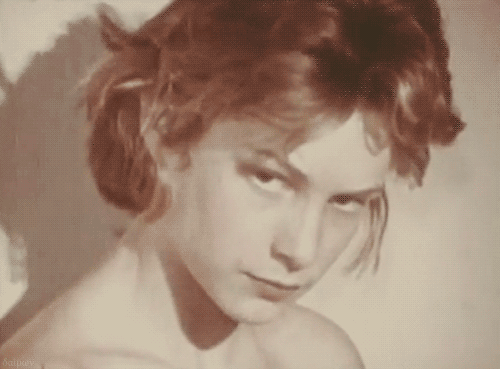
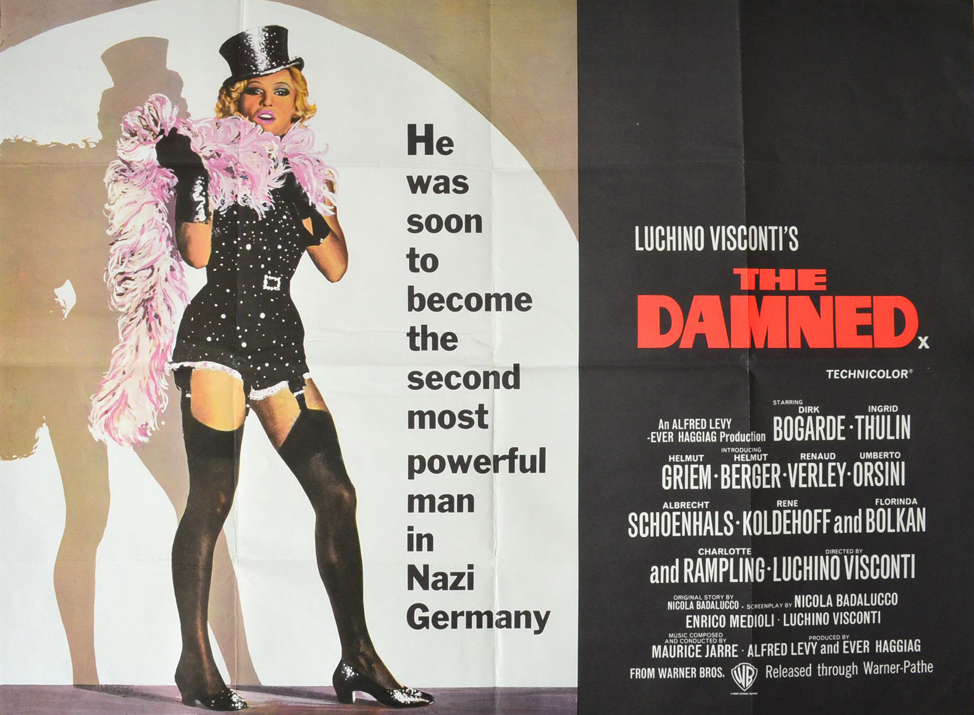
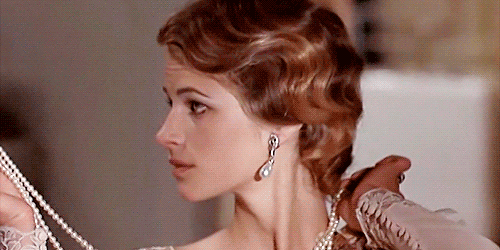
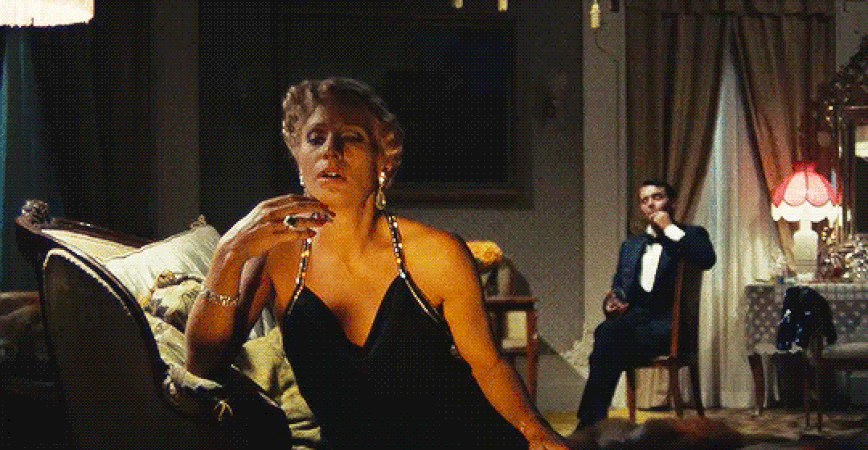
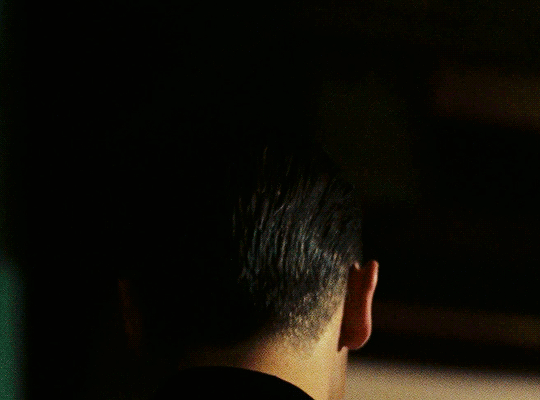
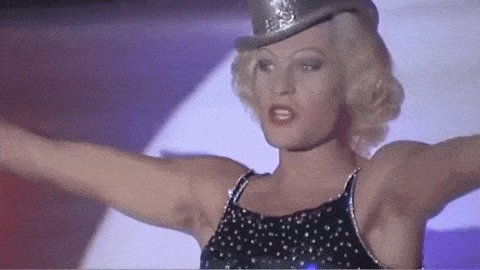
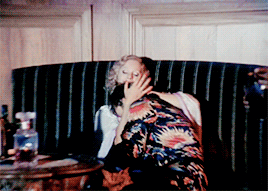
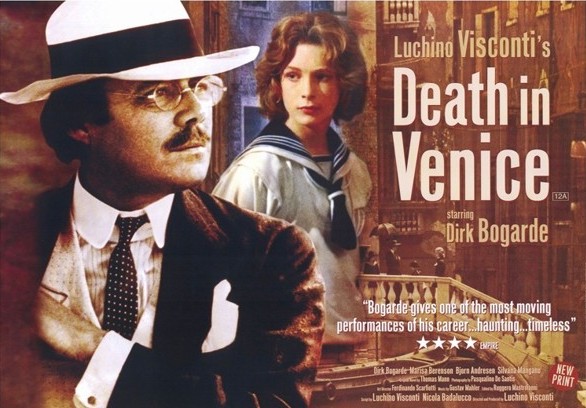
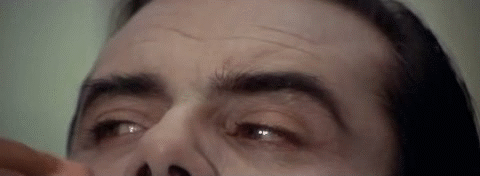
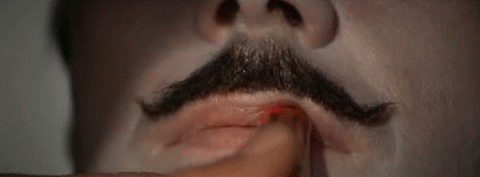
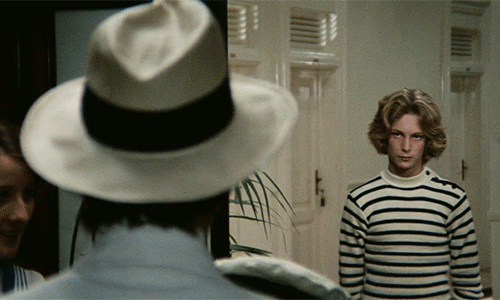
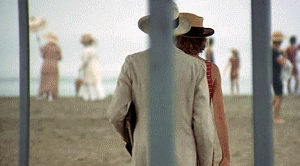
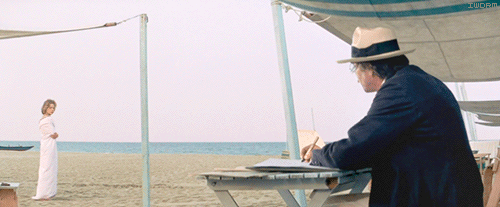
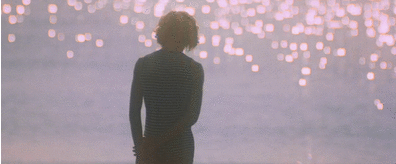
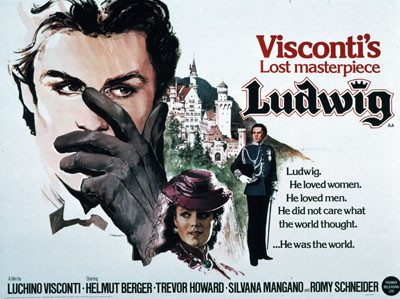
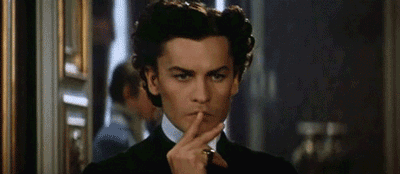
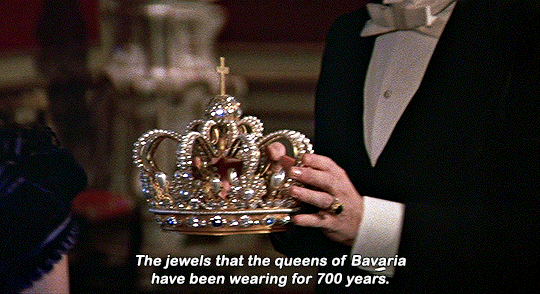
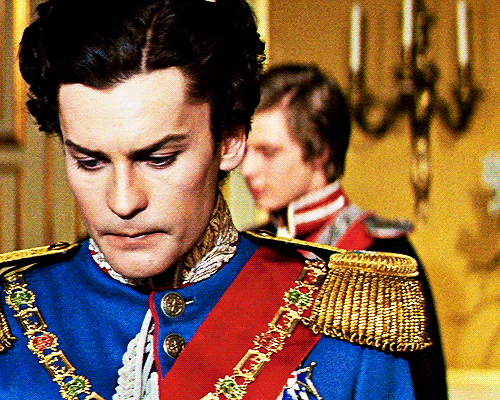
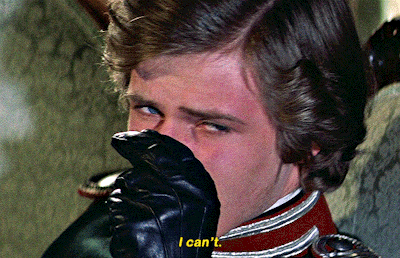
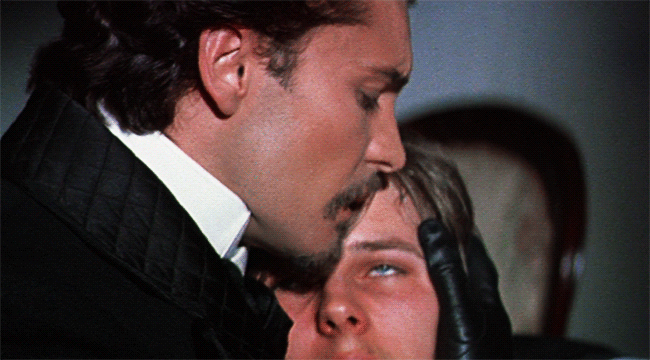









































 Now available in North America
Now available in North America 